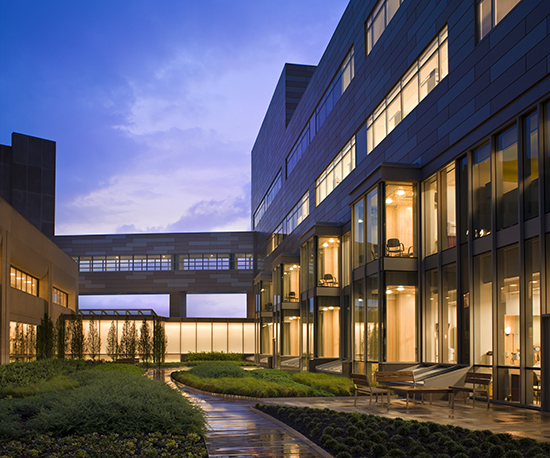
In this month’s Health Environments Research & Design Journal (HERD) there is an interesting research paper by Samira Pasha PhD who assessed five gardens in three pediatric hospitals in Texas. She conducted a comprehensive review and arrived at specific areas to research. Pasha selected gardens with high visibility (not off the beaten track), surveyed 70 staff and 76 family members. The results are interesting and have practical design implications.
Why do people go and don’t people go to the garden? Let’s look at a few conclusions from the paper:
– Their child’s medical condition (25%) prevents it
– Didn’t know it was there (27%) – despite the location in a high traffic area
– Staff like to go to eat lunch and relax
– Not enough shade (Pasha included some shade maps of each garden)
– Unpleasant weather
Recommendations:
Organizational approaches
– Educate staff about the garden
– Encourage people to hold events
– Have volunteers bring families out
– Put signage in the hospital
Improve accessibility
– Put gardens near waiting rooms, cafeterias, gift shops
– Make them more play friendly
– Make them work for eating
Better support for functions and activities
– Shading structures, adjustable umbrellas
– Water fountains, plants to create microclimates (in Texas)
– Comfortable movable and diverse seating options
– Child seating, seating at play areas to sit and watch them play
Dr. Pasha notes the pressures on operational costs for garden maintenance and the problem in quantifying the ROI for gardens. Some of the ROI discussion covers ‘restorative nature’ – the impact on mood, health and pain reduction though some of the early research referenced isn’t very convincing for me from a research methodology perspective, though my own experiences as a patient and family member of a patient concurs.
I think her analysis from Texas does apply to any location and with some strategic planning on the location of gardens combined with maximizing use throughout the year we can increase garden visits and observing an increase in garden visitors is one immediate way to convey to administration that ‘it’s worth it.’
My two favorite hospital gardens are the “Bulfinch Patio” at Massachusetts General Hospital (huge trees, green lawn, three season use) and the roof of MGH’s Yawkey Center (8th floor – Cancer Center’s Infusion Unit floor — Ulfelder Healing Garden — Halvorson Design). It is out of the way and was primarily used by staff for the first 2-3 years. It has an interior ‘greenhouse’ so visitors can go sit there and look at the snow in the garden with views of the Charles River below. It is a real place of relaxation and respite. A key to its ‘unseen’ beauty is that when the fundraising occurred, the group included an annuity that pays for its upkeep. Plans need to be in place for the same ‘durability’ we consider when we design every other part of the project.
Have you visited any healing gardens?
What do you like about the gardens included in your projects?
Have you seen clever ways people have designed something about the garden that makes it very user friendly?
Related:
Barriers to Garden Visitation in Children’s Hospitals


